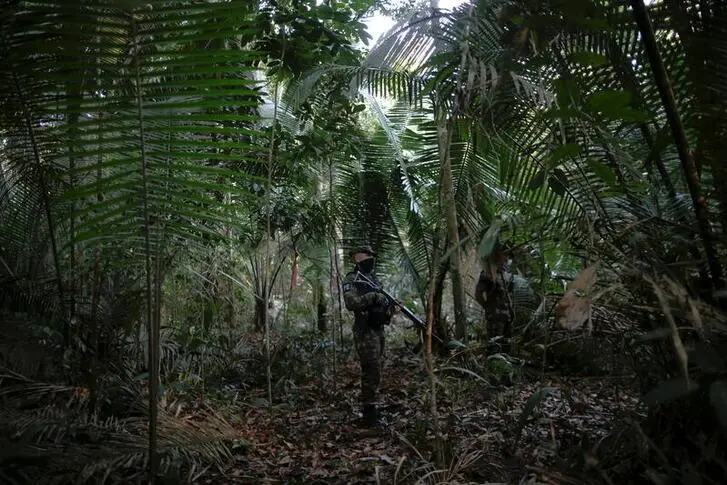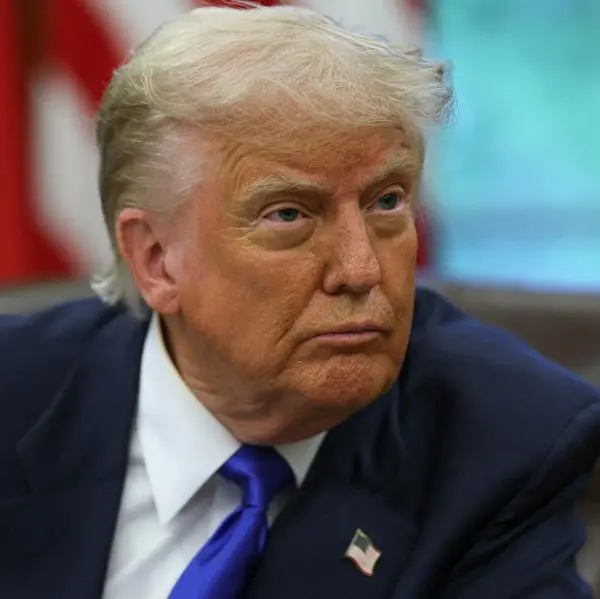PHOTO
MONTREAL - Tangled expanses of Amazon rainforest, high mountains of the Himalayas, and cloud-shrouded forests are just some of the unique landscapes contained within the world's most nature-rich nations. And protecting these ecosystems, experts say, could help save the planet.
Governments are trying to work out a new global agreement to guide conservation and wildlife protection through 2030 at a U.N. summit in Montreal this week. Of the nearly 200 countries assembled, five are considered to be among the world's most biodiverse nations — measured in the number of unique species.
Brazil, China, Indonesia, Mexico, and Colombia boast more than 131,000 plant species, around 6,000 birds, and nearly 3,000 mammals between them, according to data compiled from the International Union for the Conservation of Nature, BirdLife International and the U.N. Environment Programme. That's more than a third of all the world’s flowering plants, and more than half of all bird and mammal species on Earth.
Still, that's not necessarily enough to garner them any special treatment in the talks, experts said, which run on a consensus basis meaning all parties must agree.
"Biodiversity in every country matters, so we don't want to say that Brazil's biodiversity is worth more than, say, Mongolia," said Alfred DeGemmis, an international policy expert with the Wildlife Conservation Society.
However, "there is a need to listen to those countries who will have significant responsibilities when it comes to biodiversity in the finance space," he said, noting that countries with a lot of nature are the ones that will have to implement any new deal.
Here's what some of the world's most nature-rich nations want to happen at the talks.
BRAZIL
Some 60% of the world's largest rainforest – the Amazon – falls within Brazil's borders, containing unique and charismatic critters such as the giant anteater, two-toed sloth, and poison dart frog.
Around half of the entire Amazon Basin is currently under some form of protection, and to keep it that way, Brazil has championed financing in the U.N. talks.
Developing countries are asking that a fund be set up to support their conservation efforts, with $100 billion per year, or 1% of global GDP, flowing from wealthy nations to the developing world until 2030.
Any deal "must be accompanied by approval of a commensurately robust package on resource mobilization," the Brazilian delegation said during a meeting on Dec. 10.
Brazil has more than a third of its land under some level of protection, but has not yet formally supported a global pact to protect 30% of land and sea by 2030, known as 30-by-30.
CHINA
China holds the presidency of this year's summit, and the talks were initially scheduled to be held in Kunming — a city in Yunnan province featuring towering karst cliffs and deep mountain gorges.
As president of the negotiations, China has to strike a balance and find an agreement among all parties if they want a successful outcome.
"Because they are president, frankly, they want to be … a little bit back from being too loud on issues," said Norway's Minister of Climate and Environment Espen Barth Eide.
Last year, Chinese President Xi Jinping announced the launch of a $237.47 million fund to support nature protection in developing countries.
China has designated 25% of its land as "ecological conservation" areas. But it has not yet supported 30-by-30.
COLOMBIA
Scientists are still mapping out the full extent of Colombia's biodiversity, after much of the country's jungles were off limits to field research due to decades-long civil conflicts.
Since a 2016 peace deal with the Revolutionary Armed Forces of Colombia (FARC), scientists have discovered many new plant species in the country's forests.
Colombia is arguably the most ambitious and most biodiverse nation at the talks. The government supports the 30-by-30 goal and is advocating strongly for the inclusion of indigenous people and local communities in the final deal.
"The least we can do — the minimum for the survival of species — is to protect at least 30%, based on science," said Colombia's Minister of Environment and Sustainable Development Susana Muhamad during a meeting on Friday. "It should be 50%."
MEXICO
This North American country contains a diverse landscape that ranges from dry desert to mangrove swamps to cloud forest to jungle.
The Mexican delegation has taken a fairly progressive approach to the talks, and supports the 30-by-30 goal, with around 15% of lands currently protected. Negotiators say they also want to see numerical targets for the phase out of pesticides — a divisive goal which has drawn pushback from Brazil and China.
However, Mexico has been less keen to address reducing the footprint of consumption.
INDONESIA
An archipelago of more than 10,000 islands, this forest nation has made a fortune on palm oil — often at the expense of the country's critically endangered orangutans, scientists say.
Habitat destruction from palm oil plantations, logging and mining, along with hunting, halved the orangutan population on the island of Borneo — shared between Indonesia, Malaysia, and Brunei — from 1999 to 2015, according to a 2018 study in the journal Current Biology.
But Indonesia has so far remained relatively unengaged in the talks, observers told Reuters.
The country has said it will put around 10% of its territorial waters under protection by the end of this decade, and it's the only large forest nation where deforestation is currently declining.
"Indonesia supports voluntary commitments with appropriate flexibility based on national circumstances," said Indonesian Deputy Environment and Forestry Minister Alue Dohong at talks on Friday.
(Reporting by Gloria Dickie; editing by Diane Craft)





















